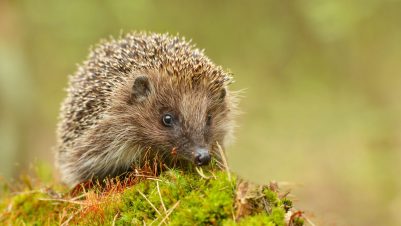According to the Natural History Museum in London, there are some 10,000 described species of extant reptile living on every continent except for Antarctica (Ashworth, 2022). Reptiles have an interesting evolutionary background: some evolutionary biologists include the birds (Aves) as a clade (or group) within the reptiles, as birds are, after all, the modern-day dinosaurs (BirdLife International, 2021). Extant species of crocodilians (alligators, caiman and crocodiles) are more closely related to birds than they are to other forms of reptile via a common ancestor in the archosaurs (Gershon, 2014). However, for the sake of clarity, this article will not discuss the birds.
The title of this article is misleading. Reptiles are not cold-blooded. They are best described as endothermic as they rely on external heat to maintain a stable internal temperature. For example, reptiles will bask (heliothermy) or press themselves against warm rocks (thigmothermy) to use the sun’s energy for their own homeostatic demands. Humans are endotherms as we can maintain a stable internal temperature from the chemical reactions that occur within our body.
It is perhaps this major physiological difference that means we find it harder to relate to reptiles, amphibians and fish compared to other “warm-blooded” mammals. Yet, let’s not forget that the mammals owe their existence to reptilian ancestors too – humans are not that far removed after all.
Climatic influences on reproduction
The importance of our consideration and caring approach to reptiles has never been greater. There are many threats that wild populations of reptiles face and many challenges posed to captive reptiles that prevent them from experiencing good care and good welfare. Climate change is changing the way some reptiles reproduce.
Some reptile species use a technique called “temperature-dependent sex determination” as a means of producing an equal ratio of male and female offspring. Crocodilians and chelonians (turtles and tortoises) bury their eggs in sand or under piles of vegetation. The warmth of the sand or vegetation incubates the eggs and depending on where an egg is situated within the nest (at what depth), so the surrounding temperature will cause the embryo to develop as either male or female. Crocodiles, for example, produce male offspring at warmer temperatures and female offspring develop at cooler temperatures (Woodward and Murray, 1993). As climate change warms the planet, there is a concern that producing an equal sex ratio within a clutch of eggs will become more difficult. Populations of species that rely on external temperature to determine the ratio of male to female could therefore decline towards extinction.
As climate change warms the planet, there is a concern that producing an equal sex ratio within a clutch of eggs will become more difficult. Populations of species that rely on external temperature to determine the ratio of male to female could therefore decline towards extinction
Many reptilian species perform complex courtship displays (Figure 1). For example, male alligators (Alligator mississippiensis) make a deep, resonating bellow to stake out territories and this bellow causes the water to dance over their backs (Garrick and Lang, 1977). Male green anoles (Anolis carolinensis), a species of lizard from the south-eastern USA, flash a colourful dewlap under their chin and bob up and down to signal their intentions to breed (Neal and Wade, 2007). Red-eared terrapin (Trachemys scripta elegans) males flirt with females by vibrating their elongated fingernails on and around the female’s head (Jackson Junior and Davis, 1972).
These courtship rituals are as elaborate and outlandish as any seen in the mammalian and avian worlds, and their performance should be promoted (for example, through the housing of appropriate social groups and the creation and maintenance of a correct microclimate within a vivarium) to maximise the chances of viable reproduction.

Practical considerations for successful conservation
Understanding reptile physiology, and how behaviour is used to maximise reproductive output, is important to conservation action and successful species recovery programmes. Vast numbers of reptiles are smuggled from the wild into the (legal or otherwise) exotic pet trade and this causes a depletion of wild populations, which is unsustainable when not regulated (Stringham et al., 2021).
Correct identification of species within captive (pet) populations is necessary to enforce conservation policy focused on species that should not be traded. Alongside this, understanding the needs of these species once housed in a captive environment is crucial to long-term success at keeping these species alive, healthy and breeding.
There are many excellent examples of conservation projects that have maximised success of captive breeding or conservation management programmes by measuring reptile behaviour and basing captive care on behavioural ecology and behavioural needs; for example, the sand lizard (Lacerta agilis) conservation and reintroduction work conducted by Marwell Zoo in Hampshire, UK (Govier, 2017).
Maintaining a good welfare state
A reptile’s welfare state can be hard to define and measure. It is well understood that they enjoy environmental enrichment and will alter their behaviour to more naturalistic activity patterns when enriched enclosures are provided (Figure 2).

Reptiles are also highly motivated to perform specific behaviours in the same way as seen in “warm-blooded” species. Consequently, veterinary professionals, keepers and owners can enable reptiles to perform species-appropriate behaviours by:
- Understanding the biological function of behaviour and the motivational state (need for its performance) behind it
- Providing the correct physical, social and thermal environment to promote a diverse behavioural repertoire
- Ensuring that light levels (and especially provision of UV light associated with calcium metabolism) are species appropriate
- Making seasonal changes within a reptile’s environment to assist with physiological changes that can bring on breeding activity
- Feeding the correct diet, including use of appropriate supplementation, according to a species’ nutritional needs
- Implementing changes to enclosure furnishings, planting and structures to allow for reproductive behaviours to occur
It is well understood that [reptiles] enjoy environmental enrichment and will alter their behaviour to more naturalistic activity patterns when enriched enclosures are provided
Final thoughts
Our perception of reptiles as cold-blooded and therefore less complex than mammals has, for too long, perpetuated an acceptance of poor husbandry, impoverished housing and lack of concern for their welfare. New research has shown the importance of environmental complexity and enclosure size on reptile behaviour and welfare. Both large and small species of snake, for example, when given the opportunity like to stretch out (Hoehfurtner et al., 2021; Warwick et al., 2019) and this relatively basic behavioural need has not, until recently, been considered as important for welfare.
Small-scale projects and case studies, such as student projects that help evaluate why reptiles need enrichment (Rose et al., 2014), add to our knowledge of the motivation behind their behaviours and how they organise social interactions and courtship, and then provide a sound foundation for conservation initiatives.










